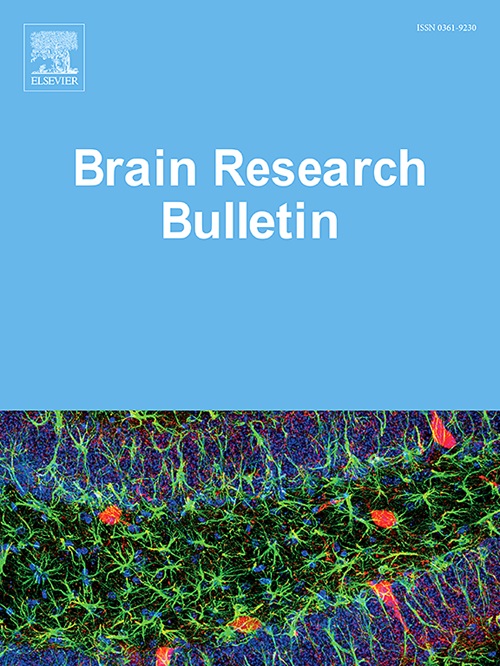Differed brain spontaneous neural activity between limb-onset and bulbar-onset amyotrophic lateral sclerosis patients
IF 3.5
3区 医学
Q2 NEUROSCIENCES
引用次数: 0
Abstract
Purpose
To investigate the differences in brain spontaneous neural activity between limb-onset and bulbar-onset amyotrophic lateral sclerosis (ALS-L and ALS-B, respectively) patients using resting-state functional MRI (rs-fMRI) with amplitude of low-frequency fluctuation (ALFF) and regional homogeneity (ReHo).
Materials and methods
The rs-fMRI data were collected from 41 ALS patients (11 ALS-B and 30 ALS-L) and 25 healthy controls (HC). ALFF and ReHo values were calculated, and group differences were assessed using one-way ANCOVA and two-sample t-tests. Correlation analyses with clinical measures were conducted. Support vector machine (SVM) analysis was performed to distinguish ALS subtypes.
Results
Compared with ALS-L, ALS-B showed increased ALFF values in the right gyrus rectus/ orbital part of right middle frontal gyrus, orbital part of left middle frontal gyrus and left dorsolateral superior frontal gyrus/ left medial superior frontal gyrus and decreased ALFF values in the left superior occipital gyrus (FDR-corrected, P < 0.05). Both ALS subtypes demonstrated distinct ALFF alterations compared to HC. Differences in ReHo values were only found between ALS-B and HC. Correlation analyses revealed associations between ALFF in specific brain regions and ALS clinical scores. SVM analysis achieved an accuracy of 90.2 %, with an AUC of 0.909 in differentiating ALS-B and ALS-L.
Conclusion
ALS-B and ALS-L patients had distinct alterations in brain spontaneous neural activity, which could serve as potential biomarkers for accurately distinguishing these two subtypes. Our findings offer a new insight into the neural mechanism of ALS, underscoring the importance of personalized diagnostic approaches for this complex neurological disorder.
求助全文
约1分钟内获得全文
求助全文
来源期刊

Brain Research Bulletin
医学-神经科学
CiteScore
6.90
自引率
2.60%
发文量
253
审稿时长
67 days
期刊介绍:
The Brain Research Bulletin (BRB) aims to publish novel work that advances our knowledge of molecular and cellular mechanisms that underlie neural network properties associated with behavior, cognition and other brain functions during neurodevelopment and in the adult. Although clinical research is out of the Journal''s scope, the BRB also aims to publish translation research that provides insight into biological mechanisms and processes associated with neurodegeneration mechanisms, neurological diseases and neuropsychiatric disorders. The Journal is especially interested in research using novel methodologies, such as optogenetics, multielectrode array recordings and life imaging in wild-type and genetically-modified animal models, with the goal to advance our understanding of how neurons, glia and networks function in vivo.
 求助内容:
求助内容: 应助结果提醒方式:
应助结果提醒方式:


